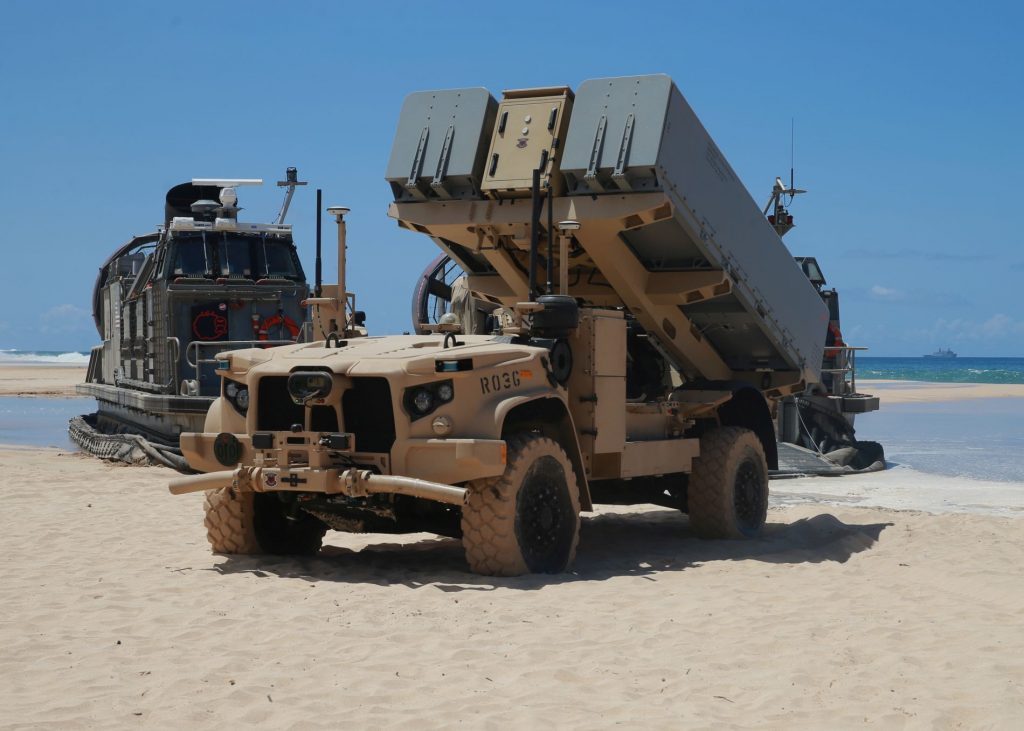Novel Amphibious Craft – NSM Platform
Whilst investigating the USMC Force 2030 Concept we came across an interesting shore-based anti-ship missile solution … raising the question; how can we improve on this?

The current iteration of NMESIS utilises an autonomous version of the Joint Light Tactical vehicle, an intended successor to the HMMWV, sporting a pair of the Konigsberg Naval Strike Missile (NSM). A pragmatic solution perhaps but reliant on a substantial 4×4 mobility platform weighing in at over 10T and a base vehicle price tag reputedly north of $300k. We estimate that the resultant ground pressure will be in the range 15-30 psi, limiting potential for use on soft ground. And of course it is not amphibious.
So, what can we do?
The NSM launch system is good fit for Trident 60, which is our largest variant with an on-board load capacity – both on land and afloat – in excess of 3T, more than adequate for a twin NSM cassette and lift mechanism weighing in at the 2T mark. An overall system weight of 4-5T on six large low pressure wheels allows for a ground pressure of less than 2 psi at max AUW. A vital mix of mobility characteristics, we believe, for operations in the Littoral.

So we arrive at a robustly simple system that is natively amphibious with extreme terrain crossing capability at around one-third the weight and cost of the current USMC solution.
It will never catch on …

